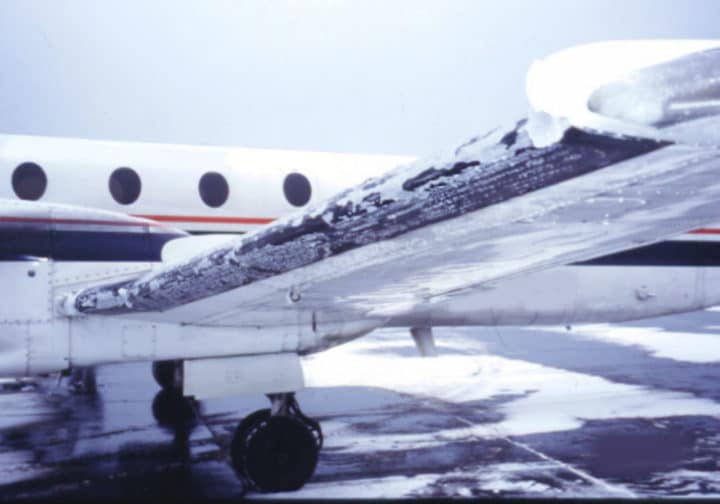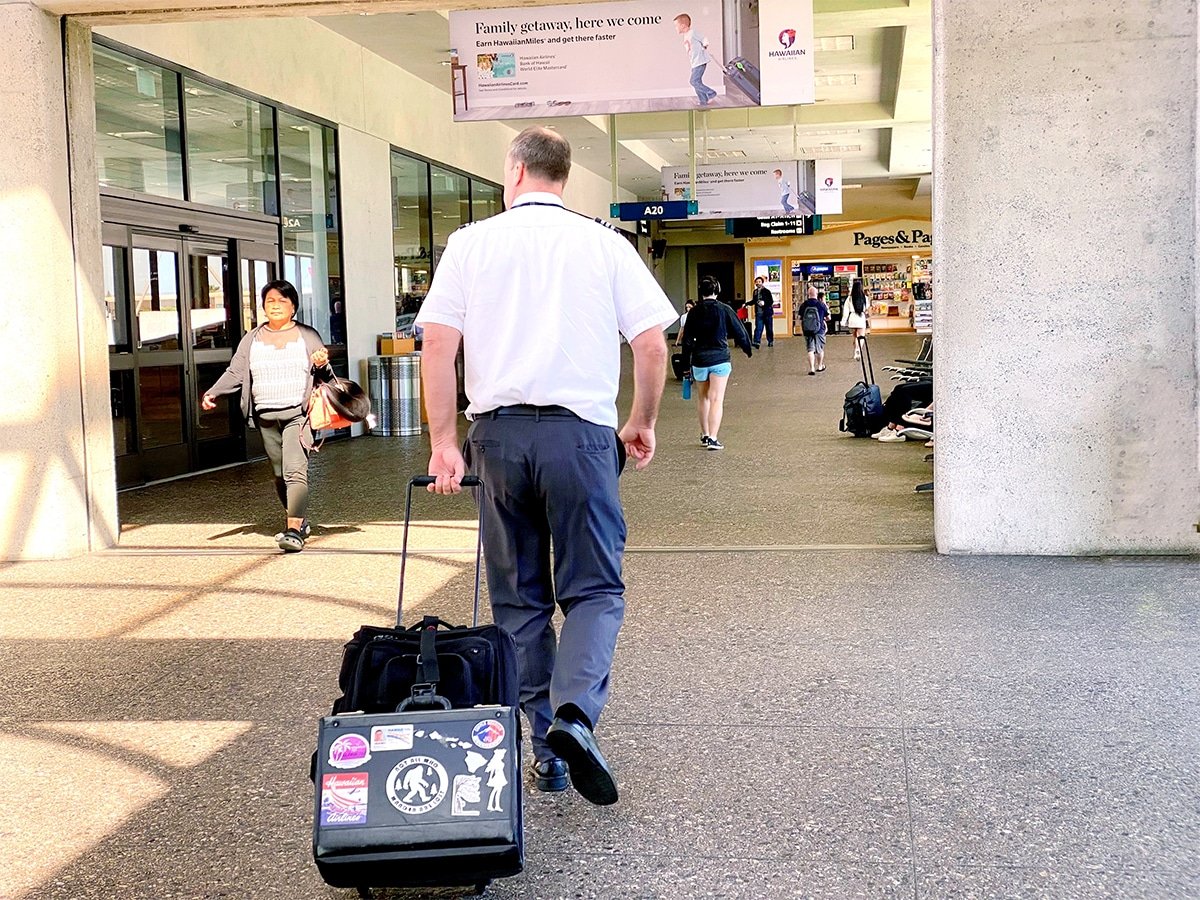
In our Ask a Pilot series, pilot Spencer Marker answers one of your aviation-related questions each week. See past installments here and submit your own to Whitney@johnnyjet.com.
Question
Hello, Spencer. Since the air is so cold at the altitudes airplanes fly at, the skin of the airplane must get super cold. What happens when it flies through a cloud afterward? Does the moisture stick to the skin of the plane? What do you do about it?
—Alan B.
Answer
Alan, thank you for writing me this week. That is an excellent question! The air at 35,000 feet is extremely cold, even -60ºF or colder! Flying in such conditions, the skin of an airplane also gets cold as it cruises through the sky. So when clouds are encountered, there is a chance that moisture will freeze and stick to the airplane. We call this in-flight icing, and it can be encountered several ways during a normal flight. But fear not: Commercial aircraft have many ways to combat the buildup of ice.
In-flight icing
When we discuss in-flight icing, we’re referring to the ice that an airplane can build up as it flies through clouds and precipitation, not snow and ice that the airplane accumulates as it sits on the ground. This type of ice has been discussed in a previous article and is removed through ground deicing methods, usually spraying a hot glycol solution on the airplane.
Inflight icing occurs in several instances. One is when a cold soaked airplane that has been at altitude flies through a cloud with liquid moisture that freezes and sticks to the skin of the airplane. In this instance, the accumulation of ice is generally light. Ice can also be encountered when an airplane flies through super cooled water droplets in a cloud. These drops are liquid water but their temperature is below freezing. When this moisture contacts the skin of the airplane, it freezes and can accumulate quickly.
So why does it matter if ice is sticking to the skin of the airplane? Well, as I discussed in the article linked a couple paragraphs up, the addition of ice to the wing of an airplane can alter the shape of the wing. Since airplanes employ the airfoil shape to create lift, changing this shape can decrease lift or lead to other control issues. Ice adhering to the inlet of an engine can distort airflow into the engine as well, leading to compressor stalls and reduced engine performance. This ice can also become dislodged and ingested, which could damage the engine. All bad stuff. Luckily, transport airplanes are equipped to combat this ice buildup.

Onboard anti-icing equipment
Technology that enables us to successfully combat the buildup of ice has been evolving steadily since the introduction of the airplane. Today, pilots employ several tools to make sure the wing stays clean and the engines stay clear.
When it comes to combatting the buildup of ice on the wing, modern aircraft employ a number of methods. Large jets, like the Boeing 737 or Airbus A320, employ thermal de-icing when ice is encountered. In these aircraft, hot air is bled, or ducted, from the engine just prior to combustion and routed to the front edge of the wing. Here, it heats the wing sufficiently to cause any ice buildup to immediately turn to vapor (yes, it’s that hot). The air can also be used to heat the tail, too, if required. The innovative Boeing 787 lacks a bleed-air system. So instead, the front of the wing on this jet is heated electrically, as are the engines. This system is generally lighter but requires significantly more electrical power than other airplanes can provide.
As to what it looks like when pilots switch the wing anti-ice on, check out this great video from YouTube user flythetube.
Another method of removing ice is through the use of de-ice boots. Generally employed by smaller jet and turboprop aircraft, these mechanisms work by using air from the engine or another source to inflate a series of rubber tubes on the leading edge of the wing. This sudden change of shape causes any ice built up to shed away, leaving a clean wing behind. If the airplane is actively picking up ice, the system can be operated, either manually or automatically, in regular intervals to ensure the wing stays clean.

The engines of turboprop and jet aircraft stay clean by way of thermal de-icing. Additionally, since an operating engine creates low pressure as it draws air in, it’s more susceptible to the build-up of ice. So as a precaution, pilots will use the engine anti-ice any time they’re in visible moisture (a cloud or precipitation) and the temperature is less than 10ºC.
Propellers of turboprop airplanes are most often electrically deiced and if you look closely, these aircraft have a panel of thickened skin in line with the propeller arc. This is to prevent fuselage damage from ice slung from the propeller as it operates.
Windshields are kept clean either by using electrical heating elements, or by using air bled from the engines that’s blown over a section of the windscreen. Keeping airplane-sensing equipment (equipment used for sensing airspeed and altitude, for instance) clean is extremely important and is generally accomplished electrically.
To sum up
Thanks for the excellent question, Alan. The temperature extremes in which an airplane operates can be drastic. Aircraft engineers have built systems to combat several different types of conditions an airplane may encounter during a normal flight. And your flight crew is well-versed in their operation. All this leads to a safe flying experience in all types of weather.
Thanks again for the question! Have you encountered icing in flight? Share your comments below! And remember, if anyone has a burning aviation question or something you would like cleared up, drop us a line at Whitney@johnnyjet.com to get your question featured in an upcoming Ask a Pilot column.
Tailwinds,
—Spencer







